How the world's largest video surveillance systems work
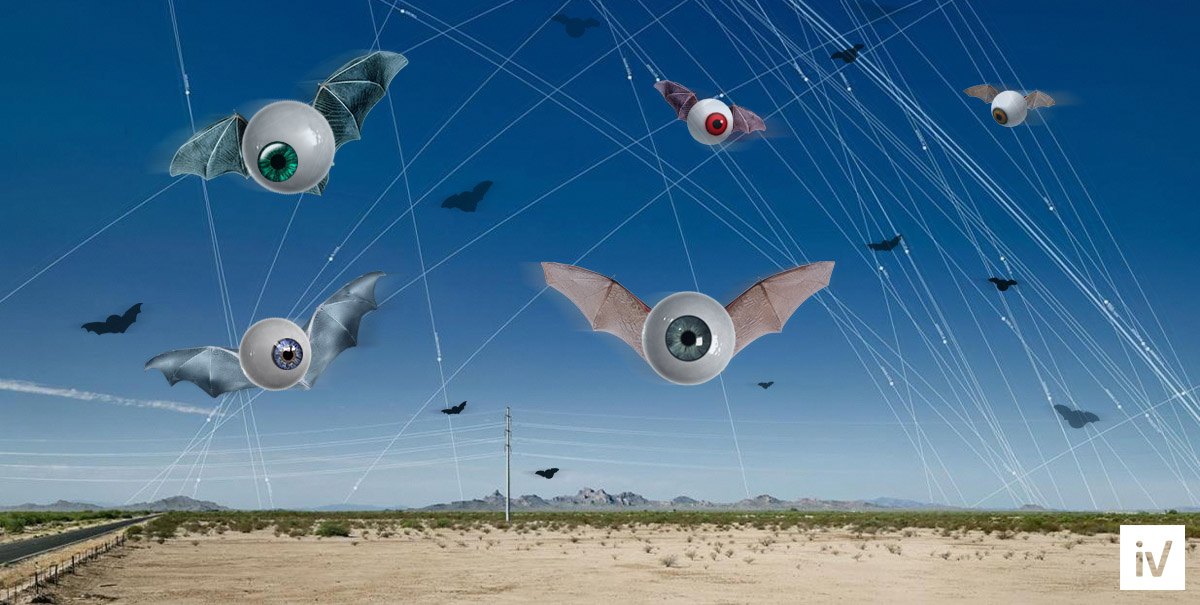
In previous posts, we talked about simple video surveillance systems in business, but now we will talk about projects in which the number of cameras in the thousands.
Often the difference between the most expensive CCTV systems and the solutions that small and medium-sized businesses can already use is in the scale and budget. In the absence of restrictions on the cost of the project, you can now build the future in a single region.
EU Solutions
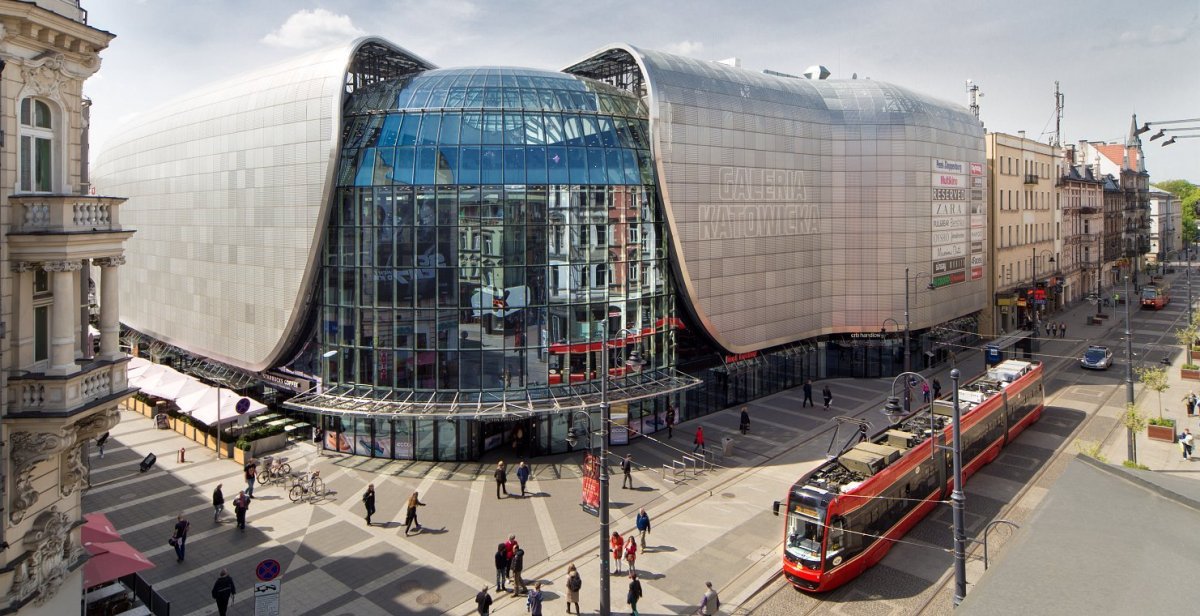
A source
Galeria Katowicka shopping complex was opened in 2013 in the center of the Polish city of Katowice. On an area of 52 thousand m² there are more than 250 shops and offices of service companies, a modern cinema and an underground parking lot for 1.2 thousand cars. Also in the shopping center is the railway station.
Given the large area, the Neinver management company set a difficult task for the contractors: to create a video surveillance system that will completely cover the territory (without blind spots, to prevent various illegal actions, ensure the safety of visitors and the safety of the property of trading companies and guests), store data about visitors and count them to generate individual data on the number of visitors to each store. In this case, the complexity of the project can be safely multiplied by 250 - according to the number of observation points. In fact, these are 250 separate subprojects. In our experience, placing even one visitor counter can be a daunting task when installing equipment without involving specialists.
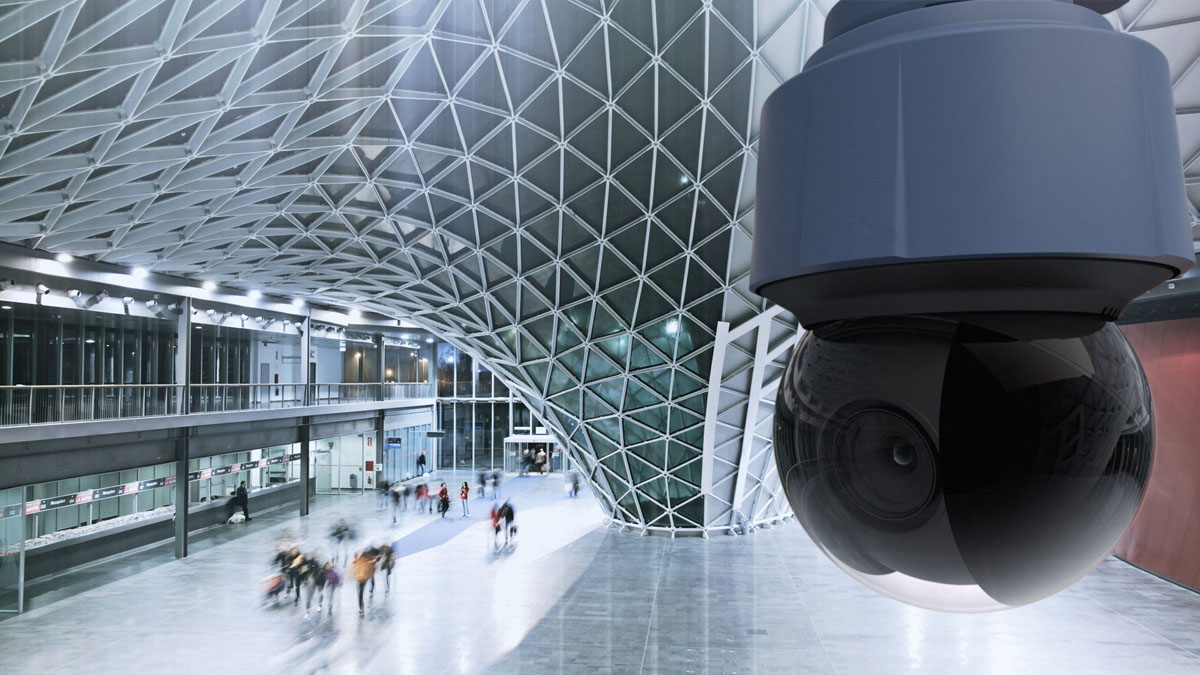
A source
For the implementation of the project, IP cameras with integrated video analytics were selected. One of the main features of the cameras was the ability to record information even if the camera’s connection to the server is interrupted.
Since the shopping center has a large number of entrances and exits, as well as many trading floors and office premises, it was required to install several cameras in each room.
To ensure maximum quality and signal transmission speed, we chose a combined network option using fiber optic cable and a traditional twisted pair cable. During installation, 30 km of cables were laid throughout the building.
When installing the system, the designers encountered some difficulties that required the use of non-standard approaches. Since the main entrance to the Galeria Katowicka is in the form of a wide semicircle, for the correct calculation of incoming visitors, the engineers had to install ten cameras at the same time. Their work and the incoming video should be synchronized with each other in order to avoid repeated counts of the same visitor.
The task of pairing the counting system with the parking monitoring system turned out to be quite complicated: it was necessary to reduce the data coming from both systems into a common report without duplicates and in one format.
To monitor and verify the health of the video system built-in self-diagnosis and testing, with which you can get data about visitors with maximum accuracy and provide quick equipment repair.
The system at the Galeria Katowicka shopping center has become Europe's largest commercial automatic counting system.
The oldest CCTV system in London

A source
During the operation "Vedana" (the so-called Skripals investigation), employees of Scotland Yard studied, according to official figures, 11 thousand hours of various video materials. And of course, they had to present the results of their work to the public. This episode perfectly illustrates the extent to which a video surveillance system can achieve with an almost unlimited budget.
Without exaggeration, the London security system can be called one of the largest in the world, and this leadership is understandable. The first video cameras were installed in 1960 on Trafalgar Square to ensure order during the meeting of the Thai royal family, as a large crowd was expected.
To understand the magnitude of the London video system, here are some impressive numbers provided by the British Security Industry Administration (BSIA) in 2018.
About 642 thousand tracking devices were installed in London itself, 15 thousand of them in the subway. It turns out that on average there are one camera for 14 residents and visitors of the city, and each person gets into the field of view of the camera lens about 300 times a day.
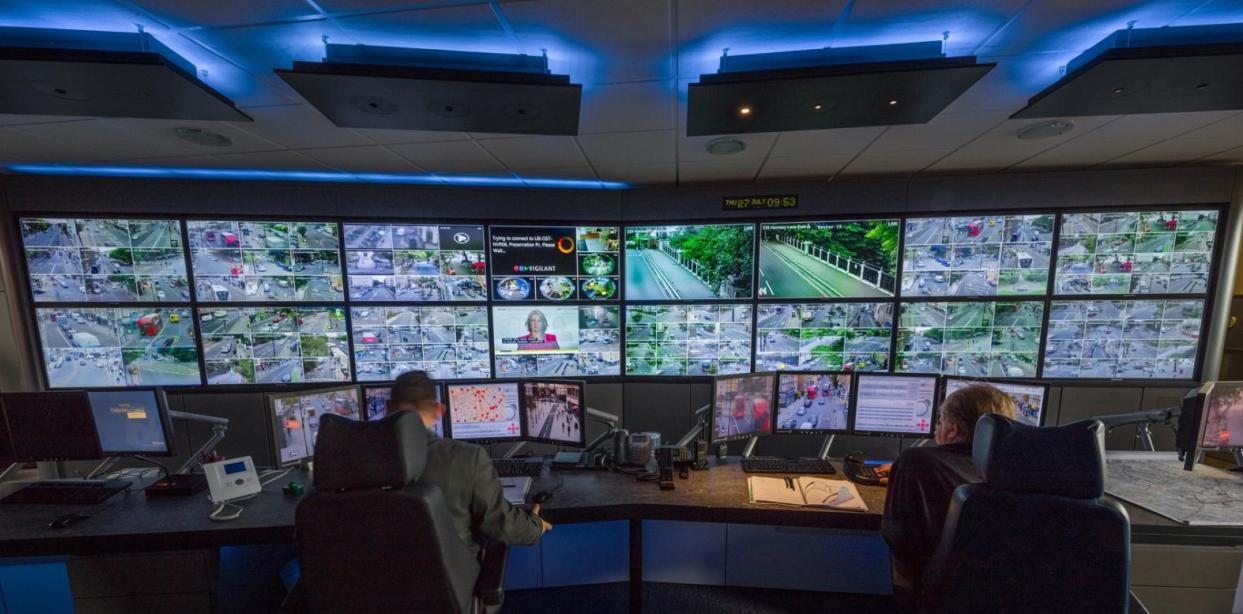
Two operators are constantly present in the control room to monitor the situation in one of the districts of London. A source
All data from the cameras goes to a special underground bunker, the location of which is not disclosed. This facility is managed by a private company in collaboration with the police and the local council.
In the urban video surveillance system, there are also private, closed systems located, for example, in various shopping centers, cafes, shops, etc. In total, there are about 4 million such systems in the UK - more than in any other Western country.
According to official figures, the government spends about 2.2 billion pounds on the maintenance of this system. The complex honestly fulfills its “bread” - with its help the police managed to solve about 95% of crimes in the city.
CCTV system in Moscow
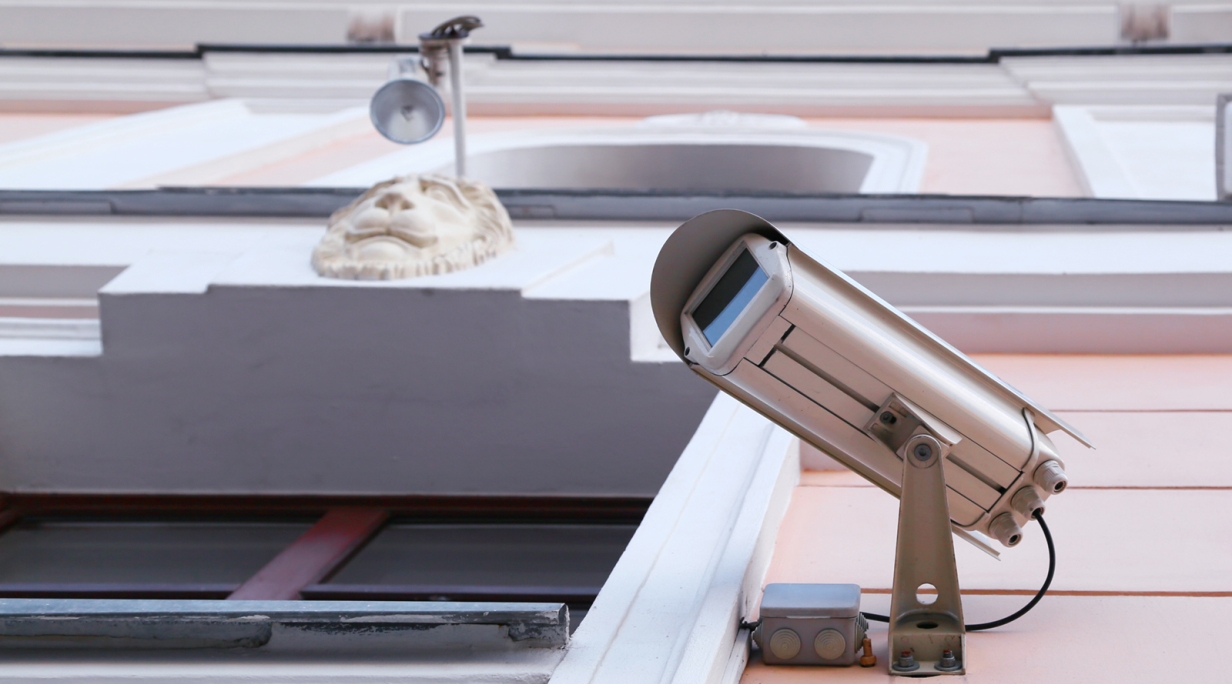
A source
Currently, about 170 thousand cameras are installed in Moscow, of which 101 thousand are in the entrances, 20 thousand in the courtyards and more than 3.6 thousand in public places.
The cameras are distributed in such a way as to minimize the number of blind spots. If you carefully look around, you will notice that there are control devices almost everywhere (most often at the level of a roof cut). Even the intercoms of each entrance of residential buildings are equipped with a camera that captures the face of an incoming person.
All cameras in the city round-the-clock transmit images via fiber-optic channels to the Unified Data Storage and Processing Center (ECHD) - here is the core of the city video system, which includes hundreds of servers capable of receiving incoming traffic at a speed of up to 120 Gb / s.
Video data is broadcast over the RTSP protocol. For archival storage of records in the system, more than 11 thousand hard drives are used, and the total storage capacity is 20 petabytes.
The modular architecture of the software center allows the most efficient use of hardware and software resources. The system is ready for the most extreme loads: even if all residents of the city simultaneously want to watch videos from all cameras, it will not “fall”.
In addition to the main function - preventing offenses in the city and helping to solve them - the system is widely used to monitor domestic territories.
Records from cameras installed in public places, objects of trade, in the yards and entrances of houses are stored for five days, and from cameras located in educational institutions - 30 days.
The performance of the cameras is provided by contracting companies, and at the moment the number of faulty cameras does not exceed 0.3%.
AI in New York
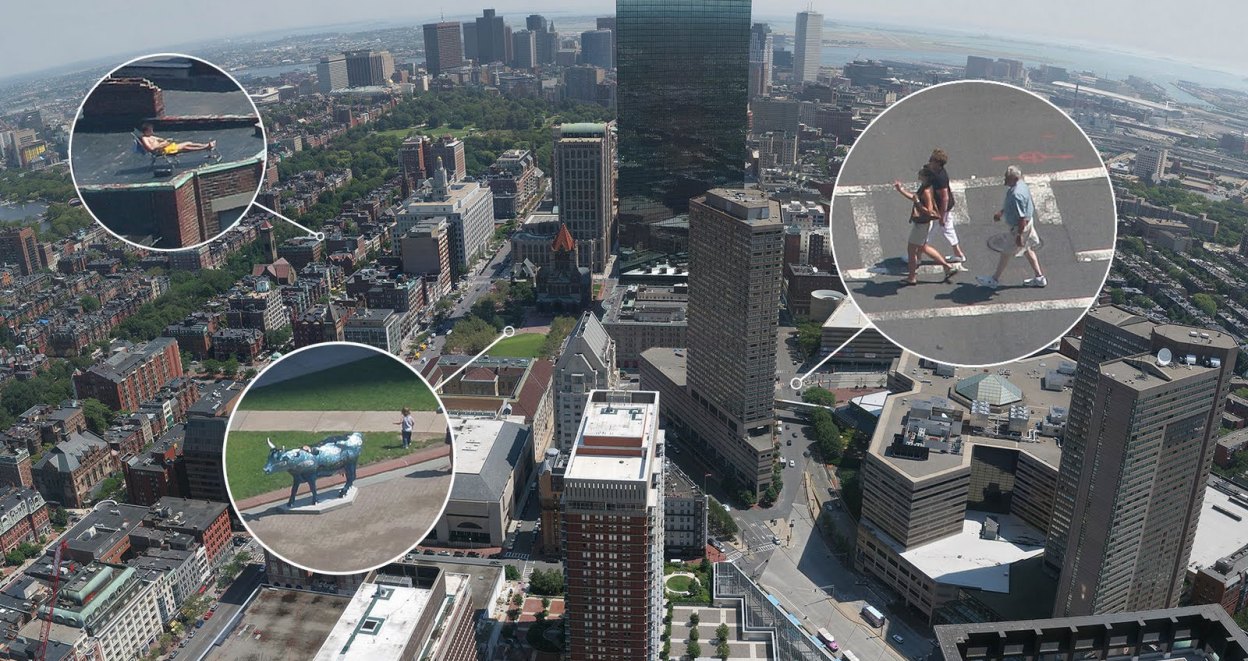
A source
The scale of the video surveillance system in New York, despite the number of inhabitants of the Big Apple (about 9 million), is significantly inferior to London and Moscow - only about 20 thousand cameras are installed in the city. The largest number of cameras are located in crowded places - in the subway, at railway stations, bridges and tunnels.
A few years ago, Microsoft introduced an innovative system - Domain Awareness System ( DAS ), which, according to the developer, should make a real revolution in the activities of law enforcement and intelligence.
The fact is that, compared to a conventional video surveillance system broadcasting a picture of what is happening at a particular site, DAS is able to give police officers a large amount of official information. For example, if a recidivist known to the police appears in the controlled area, the system will recognize it and display on the operator’s monitor screen all the data about his criminal past, on the basis of which he will decide what measures to take. If the suspect arrived by car, the system itself will track its route and notify the police.
The Domain Awareness System can also be useful for units fighting terrorism, because it can be used to easily track any suspicious person who has left a bag, bag or suitcase in a public place. The system will fully reproduce on the monitor screen in the situational center the entire route of movement, and the police will not have to waste time interrogating and searching for witnesses.
Today, DAS has combined more than 3 thousand video cameras, and their number is constantly growing. Various sensors have been introduced into the system, which respond, for example, to explosive vapors, environmental sensors and a car license plate recognition system. Domain Awareness System has access to almost all databases of the city, which allows you to quickly receive information about all objects caught in the field of view of cameras.
The system is constantly expanding and supplemented with new functionalities. Microsoft plans to deploy it in other US cities.
Great Chinese system
In China, there is even an “analog video surveillance system”: more than 850 thousand volunteer pensioners, dressed in official red vests or armed with armbands, monitor the suspicious behavior of citizens on the streets.
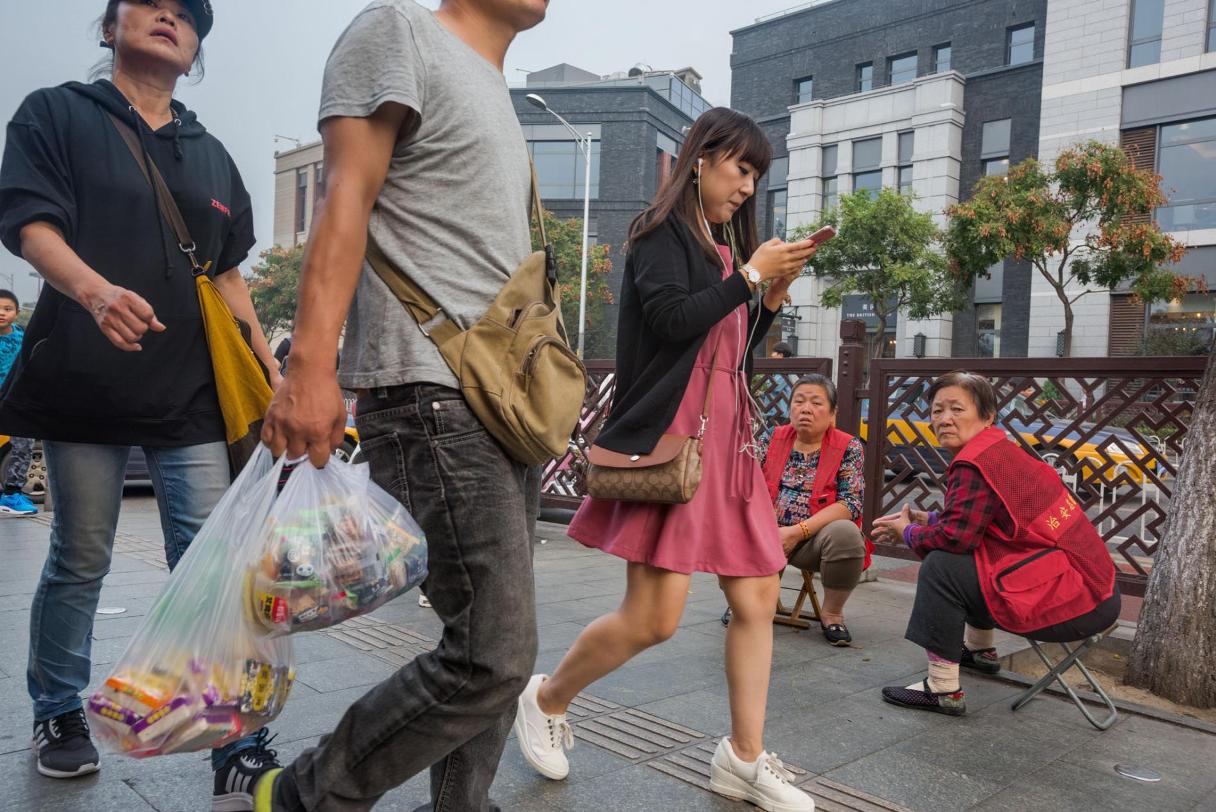
A source
1.4 billion people live in China, of which 22 million are in Beijing. This city ranks second after London in the number of installed cameras per person. The authorities claim that the city is 100% covered by video surveillance. According to unofficial data, at the moment, the number of cameras in Beijing exceeds 450 thousand, although back in 2015 there were only 46 thousand.
The 10-fold increase in the number of cameras is explained by the fact that the city’s Beijing video surveillance system has recently become part of the nationwide Skynet project, which was launched 14 years ago. The authors of the project probably did not accidentally choose such a name. On the one hand, it correlates perfectly with the well-known unofficial name of China - "Celestial Empire", or Tien-Xia. On the other hand, an analogy with the movie "Terminator" suggests itself, in which the so-called artificial intelligence system of a planetary scale was called. It seems to us that both of these messages are correct, and then you will understand why.
The fact is that, according to the developers, the global system of video surveillance and face recognition in China should record everything that every citizen of the country does. All the actions of the Chinese are constantly recorded by video cameras with face recognition technology. Information from them goes to various databases, of which there are now several dozen.
The main developer of the video monitoring system is SenseTime. Special software created on the basis of machine learning easily recognizes not only every person in the video, but also recognizes car brands and models, clothing brands, age, gender and other important characteristics of objects caught in the frame.
Each person in the frame is indicated by its color, and the decoding of the color block is displayed nearby. Thus, the operator immediately receives the maximum information about the objects in the frame.
SenseTime is very actively interacting with smartphone manufacturers. So, her programs SenseTotem and SenseFace help to recognize scenes of potential crimes and faces of potential offenders.
Developers of the popular WeChat messenger and Alipay payment systems also collaborate with the control system.
Then, specially developed algorithms evaluate each citizen's deed, scoring points for good deeds and taking points for bad ones. Thus, a personal “social score” is formed for each resident of the country.
In general, it turns out that life in the Middle Kingdom begins to resemble a computer game. If a citizen is a bully in public places, insults others and leads, as they say, an antisocial life, then his “social score” will quickly become negative, and he will be denied everywhere.
The system is still in experimental mode, but by 2021 it will be implemented throughout the country and combined into a single network. So in a couple of years Skynet will know everything about every Chinese citizen!
Finally
The article talks about systems that cost millions of dollars. But even in the most ambitious systems there are no unique features available only for fabulous money. Technology is constantly getting cheaper: what was worth tens of thousands of dollars 20 years ago can now be bought for thousands of rubles.
If we compare the functions of the world's most expensive video surveillance systems with the popular solutions now used by small and medium-sized businesses, the difference between them will be revealed only in scale.
All Articles